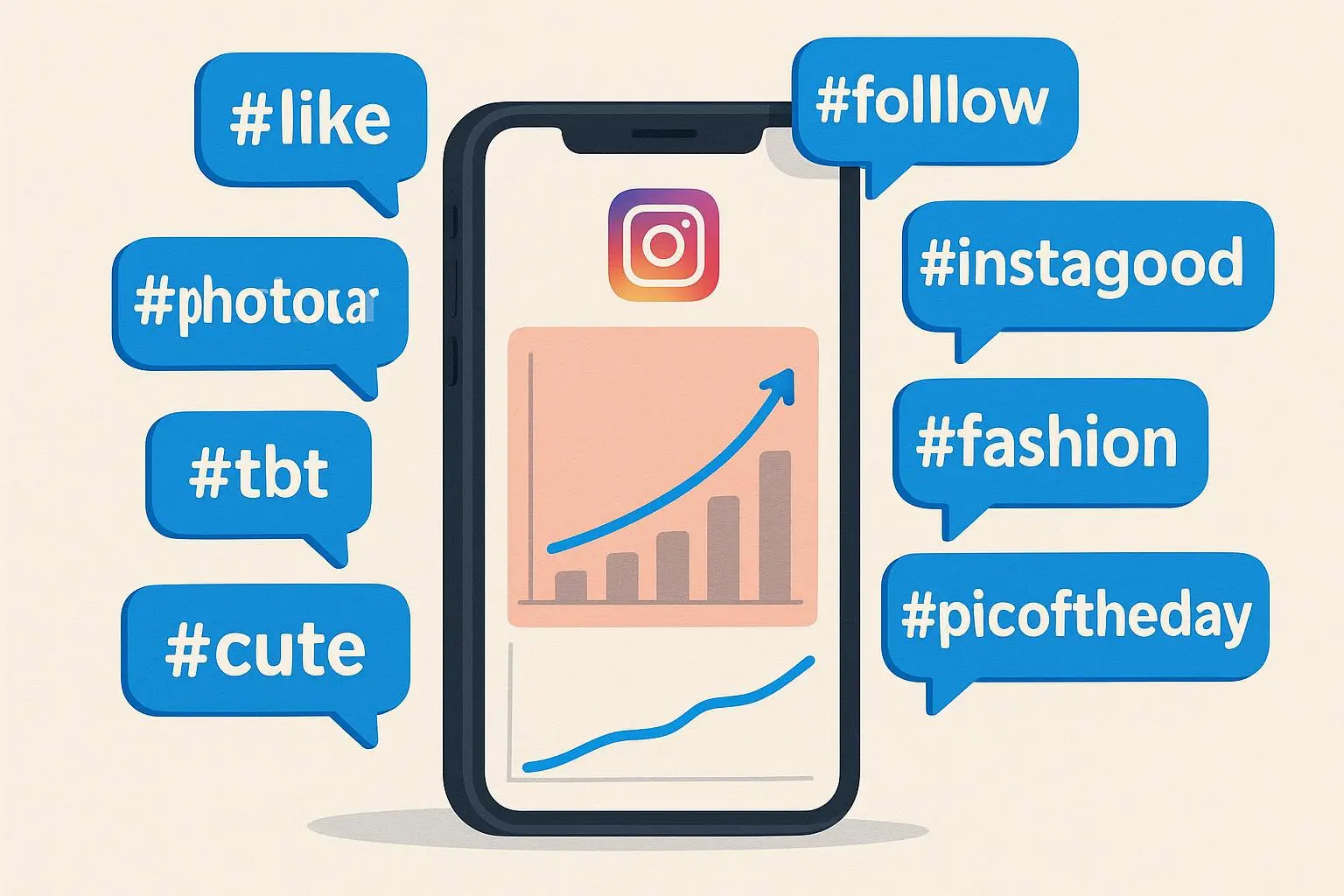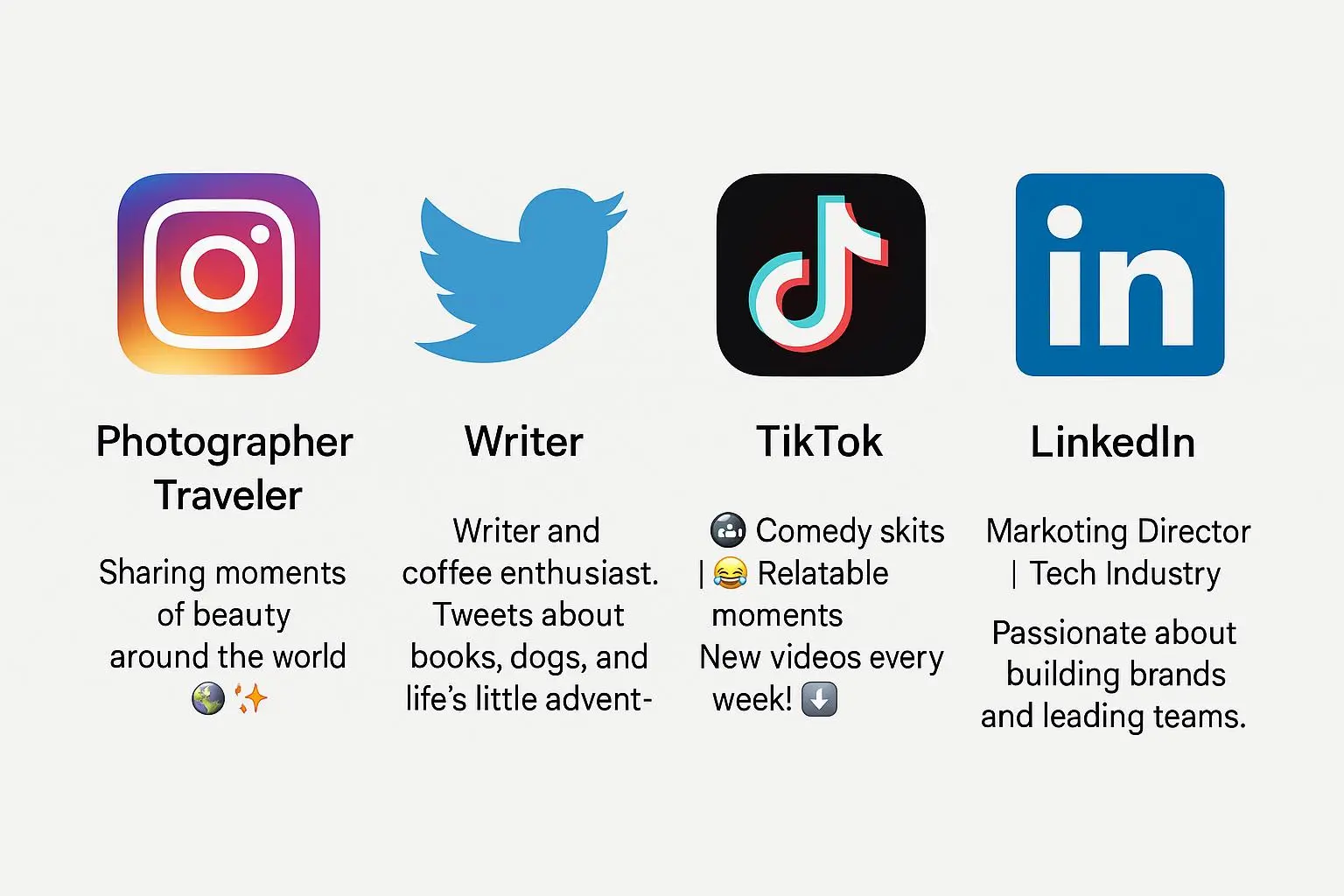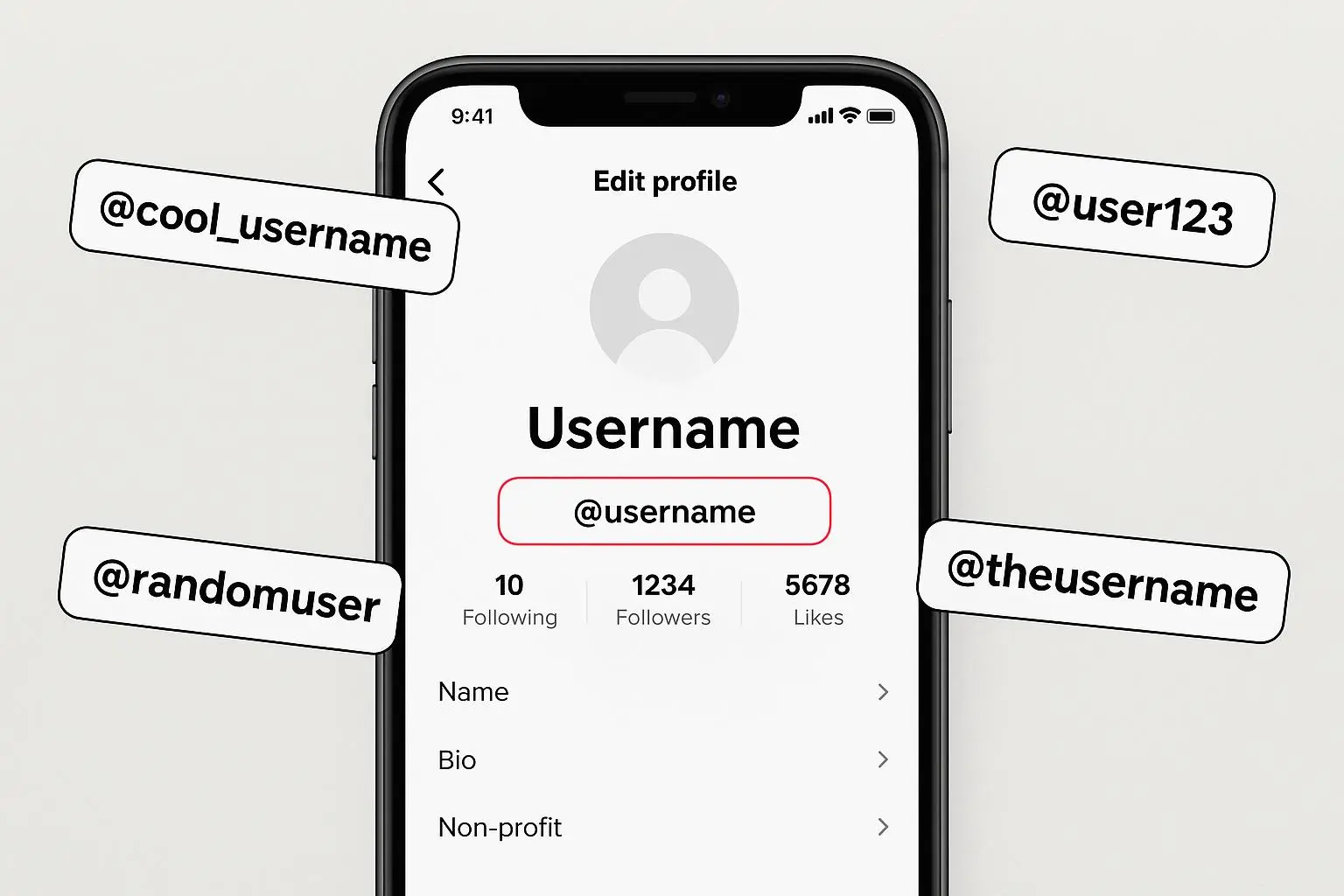
Smart Instagram Hashtag Strategy That Actually Works
Published on 8/22/2025 • 9 min read
I still remember the morning I realized my Instagram posts were shouting into a crowded, noisy room—great visuals, careful captions, almost zero new eyes discovering them. That changed when I treated hashtags like a strategy instead of a checklist. Over weeks of testing, tracking, and tweaking, I learned to speak the platform’s language and watch reach climb. This guide walks you through the exact thinking and practical steps I use today to craft hashtags that actually find people who care.
Understanding the Power of Instagram Hashtags
Hashtags are Instagram’s primary content discovery and categorization tool. They’re more than an add-on; they’re how your post gets indexed, how it appears on related hashtag pages, and how people outside your follower list find you. I think of them as signposts: the clearer and better placed your signs are, the more likely curious people will stop and explore.
Why bother? Because the payoff is real.
- Increased discoverability & reach. When used right, hashtags expose your posts to users who follow or search those tags, not just your followers.
- Audience targeting. Niche-specific tags draw people who are already interested in what you offer, which means better engagement and more meaningful interactions.
- Community building. Branded tags turn one-way posts into opportunities for user-generated content and ongoing conversations.
- Competitor intelligence. Monitoring what works for others helps you iterate faster without reinventing the wheel.
When I started thinking of tags as targeted signposts rather than filler at the end of captions, my impressions from hashtags went from negligible to consistent—and that’s the shift this guide aims to help you make.
How to Research and Find the Right Hashtags
Most creators skip true research. They rely on guesswork or a single “best of” list found online. Instead, treat hashtag research like keyword research: deliberate, repeatable, and data-informed.
Analyze Competitors and Industry Leaders
Look beyond envy and use your competitors as a research lab. I pick 5–10 accounts similar to mine—some slightly larger, some smaller. Then I review their 10–15 most engaged posts and note repeating hashtags. Patterns emerge fast: certain niche tags appear again and again, and those are usually the ones worth testing.
Steps I use:
- Make a short list of comparable accounts. Include local and national names.
- Scan their most-liked posts and jot down every hashtag they consistently use.
- Separate broad tags from niche tags and branded tags.
This doesn’t mean copy them verbatim. It means discover what audiences are already frequenting those tags and how you can speak to the same crowd with your unique voice.
Use Instagram’s Native Search
Open the search bar, tap “Tags,” and start typing a core keyword. Instagram shows related hashtags and post counts—this is quick market research in the app. I use this when I have an idea of the theme or product: a few keystrokes and I can see whether that tag is huge, reasonable, or nearly unused.
A practical trick I use: if a hashtag has an odd spike in posts from bots or unrelated content, I avoid it. Post counts are helpful, but quality matters more than raw volume.
Leverage Third-Party Tools (Neutral Suggestion)
Manual research is useful, but tools speed things up and surface options you’d miss. Third-party hashtag generators and analytics tools can show trends, performance metrics, and related tags at scale. Use them to build starting lists—then apply judgment.
Personally, I save hours by using a generator to batch-produce lists tailored to specific posts. It doesn’t replace judgment, but it gives a strong starting point.
Check “Related” Hashtags
When you open a hashtag page, Instagram recommends related tags at the top. This is a goldmine. I often discover the most effective niche tags here—ones that aren’t obvious and have engaged communities behind them.
The habit that changed my approach: after finding a good primary tag, spend five minutes scrolling its related tags and save any that feel like a direct match.
The Hashtag Pyramid: Balancing Popular vs. Niche Tags
I call this the Hashtag Pyramid because success comes from layering tags across popularity tiers. Relying only on massive tags buries your content quickly; relying only on tiny tags limits exposure. The sweet spot is a balanced mix.
Popular Hashtags (> 500,000 posts)
These are broad, high-competition tags. Use them sparingly—2–3 per post. They can produce a short-lived spike in views but won’t sustain long-term discovery.
Examples: #marketing, #socialmedia, #business
When I use these, it’s strategic: a highly polished image or a trending moment that could resonate with a broader audience.
Niche Hashtags (10,000–500,000 posts)
This is the sweet spot and where most of your tags should live (10–15 per post). These tags are specific enough to attract a targeted audience yet popular enough to deliver ongoing visibility.
Examples: #contentmarketingtips, #smallbusinesssocialmedia, #watercolortutorial
Most of my impressions and saves come from this layer. It’s where people who want the exact content you make are hanging out.
Hyper-Specific / Location-Based Hashtags (< 10,000 posts)
These tags are highly targeted—think location, hyper-niche product names, or specific techniques. Use 3–5 per post. Engagement rates from these tags are often higher because competition is low and relevance is high.
Examples: #chicagoweddingphotographer, #veganpastarecipe, #handmadepotterymug
I use these especially for local promos, location-specific shoots, or niche products where an exact match matters.
Branded Hashtags (Varies)
A unique hashtag for your brand or campaign connects your posts and invites UGC. Use 1–2 consistently.
Examples: #YourBrandName, #YourCampaignTag
I treat branded tags like a gentle nudge—present but not forcing. When followers use them, I celebrate and reshare.
How to Build a Hashtag Set for Any Post
Creating a good hashtag set is a small workflow that pays off massively when it becomes habit. Here’s how I craft mine so it’s repeatable and effective.
- Start with the post’s intent. Is this educational, promotional, or community-driven? That determines the tone of the tags.
- Pick 2–3 popular hashtags for broad visibility. Save the biggest shots for content that can handle short bursts.
- Choose 10–15 niche hashtags aligned with the topic. These are your primary discovery engines.
- Add 3–5 hyper-specific or location tags to capture highly relevant audiences.
- Include 1–2 branded tags to keep your content linked to your brand identity.
- Tailor 3–5 tags specifically to the image or caption details—color, technique, product name, or local event.
I store several rotating lists and adapt them per post. That avoids the “one-size-fits-all” trap and keeps the algorithm from flagging repetitive behavior.
Ready-to-Use Example Hashtag Sets (30 tags each)
Below are three copy-pasteable sets broken into pyramid tiers. Tweak the niche and hyper-specific tags to match your exact product, city, or technique.
Example A — Tutorial Carousel (content education)
- Popular (2): #contentmarketing #socialmedia
- Niche (15): #contentmarketingtips #contentrepurposing #contentcarousel #socialmediastrategy #creatorstudio #contentstrategy #growthtips #contentcreationtips #digitalcontent #onlineeducation #tutorialpost #learnoninstagram #marketingforcreators #contentplanning #carouselpost
- Hyper-Specific (8): #blogtocarousel #repurposecontenttips #howtorepurpose #contentworkflow #contenttemplates #midwestcontent #smallbizcontent #microlearning
- Branded (1): #YourBrandName
- Image/Captions (4): #bluebackground #stepbystep #screenshottutorial #captiontips
Example B — Product Photo (ecommerce)
- Popular (2): #shoplocal #handmade
- Niche (15): #smallbusiness #handcrafted #productphotography #madeinusa #shophandmade #smallbizowner #etsyseller #productdetails #craftsmanship #shopsmallbusiness #productlaunch #sustainablegoods #giftideas #designstudio #artisanmade
- Hyper-Specific (8): #handmadeceramicmug #potteryofthecity #oaklandmakers #studiofire #wheelthrown #minimalmug #ceramicstudiofinds #limitededitionrun
- Branded (1): #YourBrandName
- Image/Captions (4): #earthtones #closeupphoto #productflatlay #limitededitions
Example C — Local Event / Pop-up
- Popular (2): #localevents #community
- Niche (15): #popupshop #localmakers #shoplocalevents #cityevents #supportlocalbusiness #marketstall #communitymarket #shopandmeet #localartisan #weekendmarket #smallbusinessmarket #familyfriendlyevents #handmademarket #meetthemaker #supportcreatives
- Hyper-Specific (8): #brooklynpopup #downtownmarketname #satmarketsatyrday #brooklynmakers #localbrooklynshops #brooklynevents2025 #eastvillagepopup #nycweekendmarket
- Branded (1): #YourBrandName
- Image/Captions (4): #sneakpeek #behindthescenes #eventsetup #limitededitions
Tip: Keep these master sets in a note app and swap 3–5 tags per post so you’re not repeating the exact same list.
Where to Put Hashtags: Caption vs. First Comment
Instagram confirms there’s no algorithmic difference between placing hashtags in the caption or the first comment. I use both approaches depending on aesthetics. If the caption needs to be clean and minimalist, I drop the tags in the first comment immediately after posting. If the caption is short or the tags feel integral, I include them directly in the caption.
Practical tip: if you post tags in the first comment, post them within the first minute to avoid missing early indexing.
Common Hashtag Mistakes to Avoid
Even experienced users fall into a few recurring traps. I’ve made these mistakes myself—copying a giant list, using irrelevant tags, or ignoring analytics—and each time I learned faster when I corrected course.
Using Banned or Broken Hashtags
Some tags become flagged for violating community guidelines. Using them can reduce visibility or trigger restrictions. Before using a tag, open its page in Instagram and confirm:
- The hashtag page loads and shows recent posts.
- Recent posts are relevant and public (not all abusive or private).
If a tag shows mostly abusive, spammy, or irrelevant content—or the page is disabled—skip it. Repeat this quick check monthly for tags you use frequently.
Copy-Pasting the Same Hashtag List
Using the exact same list across every post looks spammy. The algorithm notices repetition. Create multiple lists and rotate them, customizing 3–5 tags per post to reflect unique content.
Using Irrelevant Hashtags
Tagging for reach with irrelevant wide tags attracts the wrong audience and reduces meaningful engagement. I once used #love on a technical how-to post—views went up, but likes and saves didn’t. Relevance beats vanity reach every time.
Ignoring Hashtag Analytics
If you’re on a Business or Creator account, Instagram shows impressions from hashtags. Track which tags drive real results—saves, follows, and clicks—and refine your sets. I run a simple monthly review: which tags consistently drove impressions and which performed like dead weight? Replace the latter.
Measuring Success and Iterating
Growth isn’t a guess. Use data.
- Check post insights to see how many impressions came from hashtags.
- Monitor saves and follows tied to specific posts; they’re better quality signals than likes.
- Keep a quick spreadsheet of hashtags you test, the post topic, and the top-line results. After several posts you’ll see patterns: certain niche tags outperform others consistently.
I run quarterly experiments: one month I prioritize one tag mix, another month I test different branded tags. The key is small, measurable experiments—not wholesale changes.
"The smartest thing you can do with hashtags is treat them like an experiment: test, measure, and iterate. Your audience and trends will shift, and your tags should, too."
Real-World Examples and Mini Case Studies (Detailed)
Case study 1 — Tutorial Carousel (personal)
- When: March–April 2024
- Account size at time: 6.2k followers
- Post: a 6-card carousel on repurposing blog posts into carousels
- Initial tags used: generic (#content, #marketingtips) — results: modest reach, ~40 saves over 7 days
- Revised set (30 tags, used May 2, 2024): see Example A above. I swapped to niche tags like #contentrepurposing and hyper-specific tags like #blogtocarousel.
- Timeline & outcome: within 7 days the post got 3x the saves (≈120 saves), a steady trickle of follows (≈80 new follows over two weeks), and a handful of message replies asking for a template. The key steps: swap tag sets, post the new tags immediately after a teaser story, and monitor hashtag impressions in Insights.
Case study 2 — Local Small Business (client)
- When: June 2023 campaign
- Business: handmade ceramics shop (Instagram @examplelocalshop)
- Account size at time: 3.8k followers
- Initial approach: heavy use of broad tags (#handmade, #ceramic)
- Revised approach: implemented a pyramid set like Example B, added city-specific tags and a pop-up event tag.
- Timeline & outcome: within 4 weeks, website clicks from Instagram rose 40% and saves increased 60% on the featured posts. We rotated tag lists weekly and tracked which niche tags produced the most saves.
These examples show that small, targeted changes compound quickly when you stay consistent and measure results.
Frequently Asked Practical Questions
How many hashtags should I use? Instagram allows up to 30. My approach: use a full set (15–30) if every tag is relevant. Quality beats quantity, but a broader mix across tiers tends to perform better than a handful of generic tags.
Should I hide hashtags in the first comment? It’s purely aesthetic. If you prefer a cleaner caption, put them in the first comment—just post quickly after the main post.
How often should I refresh my lists? Review monthly or quarterly. Trends change, popular tags evolve, and new niche communities emerge. A quarterly cleanup keeps your strategy fresh.
Final Checklist You Can Use Right Now
- Audit 5–10 competitor accounts and note recurring niche tags.
- Use Instagram’s Tags search to validate tag volume and quality.
- Build a hashtag pyramid per post: 2–3 popular, 10–15 niche, 3–5 hyper-specific, 1–2 branded.
- Rotate lists and customize a few tags per post.
- Check for banned tags before posting.
- Track hashtag impressions and iterate monthly.
Conclusion
Hashtag strategy isn’t glamorous, but it’s highly effective when treated as a deliberate process. Think like a librarian organizing books: the right label gets your content in front of people who want it. Over time, that targeted discovery leads to more saves, more meaningful follows, and an audience that actually values your content.
Start small, test often, and think of hashtags as a conversation with the people you want to reach—not a spray-and-pray tactic. The payoff comes from patience and iteration. Happy tagging.
Ready to Optimize Your Dating Profile?
Get the complete step-by-step guide with proven strategies, photo selection tips, and real examples that work.


